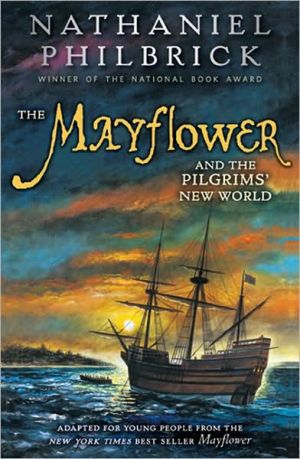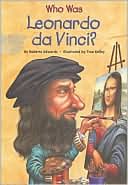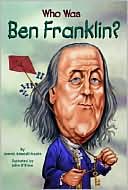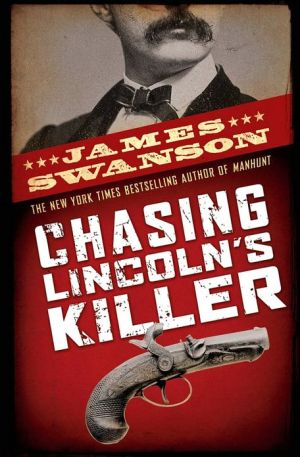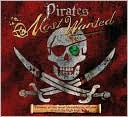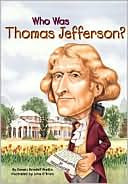The Mayflower and the Pilgrims' New World
In stunning prose, Nathaniel Philbrick evokes the drama of the voyage of the Mayflower and the eerie emptiness of coastal Massachusetts that greeted the Pilgrims. He tells how the settlers were able to gain the friendship of many powerful Native American leaders, including the charismatic Massasoit, and how they worked together to maintain peace. But the promise of the First Thanksgiving was broken with the next generation of leaders. Fifty-six years after the Mayflower's landing, a...
Search in google:
In stunning prose, Nathaniel Philbrick evokes the drama of the voyage of the Mayflower and the eerie emptiness of coastal Massachusetts that greeted the Pilgrims. He tells how the settlers were able to gain the friendship of many powerful Native American leaders, including the charismatic Massasoit, and how they worked together to maintain peace. But the promise of the First Thanksgiving was broken with the next generation of leaders. Fifty-six years after the Mayflower's landing, a horrifying conflict, known today as King Philip's war, nearly wiped out the colonists and Natives alike, and forever altered the new country. The Mayflower and the Pilgrims' New World is the perfect introduction for young readers to this epic story, at once tragic and heroic. Adapted specially for middle-grade readers, this book features a wealth of supplemental materials such as new maps and photographs, a time line, and a list of characters for added comprehension and accessibility.VOYAPhilbrick adapts his bestseller Mayflower: A Story of Community, Courage, and War (Viking, 2006) for young adult audiences here. Philbrick splits the book into three parts titled Discovery, which traces their journey and arrival; Community, which describes their relations with each other and the Indians; and War, which examines the causes and results of King Philip's war. Philbrick often refers to firsthand documents, explaining their significance in tracing the story though the generations of Pilgrims and Indians, providing a fair account of the interaction and conflict between the groups and why their early partnership collapsed into war. Philbrick uses a narrative style that does an amazing job of drawing in readers, keeping them captivated by a story that reads more like fiction than nonfiction. With only a few slow parts, the momentum carries the reader through at a steady pace. Details are introduced to the story commonly taught in texts to expand upon the basics, providing a more complete picture of early life and history in America. Added to this edition is a collection of helpful maps and pictures of various artifacts that the Pilgrims used, creating an even more vivid picture of the world the Pilgrims lived in. This book makes an excellent addition to the classroom or any bookshelf. Reviewer: Susan Hampe
\ VOYA - Susan Hampe\ Philbrick adapts his bestseller Mayflower: A Story of Community, Courage, and War (Viking, 2006) for young adult audiences here. Philbrick splits the book into three parts titled Discovery, which traces their journey and arrival; Community, which describes their relations with each other and the Indians; and War, which examines the causes and results of King Philip's war. Philbrick often refers to firsthand documents, explaining their significance in tracing the story though the generations of Pilgrims and Indians, providing a fair account of the interaction and conflict between the groups and why their early partnership collapsed into war. Philbrick uses a narrative style that does an amazing job of drawing in readers, keeping them captivated by a story that reads more like fiction than nonfiction. With only a few slow parts, the momentum carries the reader through at a steady pace. Details are introduced to the story commonly taught in texts to expand upon the basics, providing a more complete picture of early life and history in America. Added to this edition is a collection of helpful maps and pictures of various artifacts that the Pilgrims used, creating an even more vivid picture of the world the Pilgrims lived in. This book makes an excellent addition to the classroom or any bookshelf. Reviewer: Susan Hampe\ \ \ \ \ Children's Literature - Judy DaPolito\ Adapted by the author from his National Book Award-winning adult version, this excellent history of the Pilgrims' voyage to and settlement in America details the privations of the early 1600s through King Philip's War in 1675 and 1676. The first Pilgrim families came from a Separatist congregation that had left England and settled in Leiden, Holland, because they could not worship as they wished at home. Since they could not afford the trip to the new world on their own, they contracted with a group of English investors called the Adventurers to earn back their travel and supplies through profits from the cod fishing and fur trades. These Pilgrims numbered about fifty of the 102 Mayflower passengers. The other passengers, referred to as Strangers, planned on improving their fortunes in the new world. The two month voyage ended at Cape Cod in mid-November, 1620. With their supplies badly depleted, the weary group spent weeks looking for a place to settle and finally reached the spot they named Plymouth on December 12. Disease, hunger, and harsh weather brought so much death to the settlement that by spring only fifty-two of the original 102 passengers had survived. Early encounters with the Indian population were mixed, but when the Pokanoket sachem, Massasoit, visited the Pilgrims, an agreement was struck that worked well for both groups. Other Indian tribes were less friendly and serious quarrels broke out, but for a number of years the Pilgrims and Indians coexisted. As new settlers arrived from England, though, and as the settlers established more towns in the area, the problems grew. In 1662 Massasoit's son Philip became the new sachem. The Indians' ability to feed themselves hadalready diminished as they sold land to the English in order to buy guns and other goods. Relations continued to deteriorate, and in 1675 the Indians began to kill settler's livestock and rob their houses. On June 23, an English boy shot and wounded an Indian and the Indians took it as a sign to begin their war against the English in earnest. The fierce and bloody war, which killed eight percent of the settlers' men and resulted in a loss of sixty to eighty percent of the Native American population through death, enslavement, and emigration to other tribes, lasted through the summer of 1676, ending with the death of Philip and most of his chief supporters. The clear, readable text should appeal to anyone who wants to learn more about U.S. colonial history. The book is extensively illustrated with black-and-white photographs, drawings, and maps. The text is followed by a three-page time line, William Bradford's list of the original Mayflower passengers, a list of selected readings, and an index. Reviewer: Judy DaPolito\ \ \ School Library JournalGr 7 Up\ Abridged and adapted from Mayflower: A Story of Courage, Community, and War (Penguin, 2007), this volume highlights both the Pilgrims' determination to find and settle a home where they could worship freely and the perilous journey that it took to make that happen. In accessible prose, the author shatters the American myth of the landing at Plymouth Rock and the first Thanksgiving, instead describing how the Pilgrims first landed on Cape Cod, finding only sandy soil and seemingly hostile, terrifying natives. They eventually moved on to the shores of Plymouth Bay, encountering a more hospitable environment for settlement. Using William Bradford's Of Plimoth Plantation as a primary source of information, Philbrick brings to life many of the major figures from history, including Miles Standish, Benjamin Church, Squanto, and William Bradford himself. The various maps, reproductions of historical documents, photographs of significant locations, and illustrations all come together with the text to help separate fact from legend and create a realistic, readable portrayal of the Pilgrims and their first 50 years in America. General readers and students of American history will find plenty to interest them, as many of the encounters with the Native Americans are of dubious intent and usually quite bloody, though Philbrick is careful not to lay blame on any one group or person. An excellent addition to history collections.-Jody Kopple, Shady Hill School, Cambridge, MA\ \ \ \ \ \ Kirkus ReviewsThis elegant, absorbing account of the first two generations of Pilgrims sets the record straight about the first Thanksgiving and the following five decades. The chronological narrative, shortened from Mayflower, Philbrick's 2006 work for adults, details the initial uneasy alliance of Pilgrims and local tribes. As more settlers arrived wanting land, tensions increased and finally the King Philip's War ensued, causing the death of about 70 percent of local Indians and eight percent of male colonists. The eye-opening descriptions make no bones of the brutality of the colonists, who slaughtered trapped women and children and triumphantly displayed enemies' heads on posts at Plymouth Colony. The author masterfully brings both sides to life with an evenhanded sense of their complex motives and cultural differences. The many quotes are usually attributed to a source in context, but there are no endnotes and only a limited reading list. A "List of Characters" and detailed timeline, along with well-captioned visuals and a series of maps, make the complicated narrative easy to follow. (Mayflower passenger list; index not seen) (Nonfiction. 12 & up)\ \
